Part 1 of 2 Parts
NANO Nuclear Energy Inc. is an emerging microreactor and advanced nuclear technology company led by a world-class nuclear engineering team. They are developing proprietary, portable and clean nuclear energy solutions for the United Kingdom and global market. NANO Nuclear recently announced that it has become a Corporate Affiliate and member of the Nuclear Institute. The Nuclear Institute is a professional membership body dedicated to the nuclear industry in the U.K.
NANO Nuclear continues to expand its connections withing the global nuclear energy industry. These connections have and are expected to continue to support NANO Nuclear technical and business development activities.
Several key figures of NANO Nuclear’s management and technical team will attend the Nuclear Institute and the Nuclear Industry Association Annual Dinner. The attending members include Founder and Executive Chairman Jay Jiang Yu, Lead of Nuclear Reactor Engineering Eugene Shwageraus, Ph.D., and Lead of Nuclear Fuel Cycle, Radiation and Materials Ian Farnan, Ph.D.
The Annual Dinner is the premier event for the nuclear industry in the U.K. It will bring together key players from across the nuclear industry in the U.K., from academia, government, legal, commerce, and across the sector. The dinner is co-hosted by the Nuclear Institute and the Nuclear Industry Association and will be held in the Grosvenor House Hotel in London, England on December 7th, 2023.
Jay Jiang Yu is a Founder, and the Executive Chairman of NANO Nuclear. He said, “Our company is dedicated to bringing portable, nuclear microreactors to the marketplace within a decade both in the U.S. and ultimately worldwide. The timing of our joining the prestigious Nuclear Institute in the U.K. is perfect as we learn of breaking news from the 2023 United Nations Climate Change Conference in Dubai (COP 28) that more than 20 countries from four continents (including the United Kingdom) launched the Declaration to Triple Nuclear Energy by 2050. The United Kingdom, with its rich history in nuclear energy, is also looking to the future and is actively upgrading its nuclear infrastructure with advanced technologies. Our association with the Nuclear Institute presents an invaluable opportunity to leverage these synergies to gain insights and expertise from a nation that is also a leader in nuclear energy innovation.”
Dr. Ian Farnan is the Lead of Nuclear Fuel Cycle, Radiation and Materials of NANO Nuclear. He said, “The Nuclear Institute is a well-recognized entity within our industry. The organization has made significant contributions to maintain the United Kingdom’s leading position in nuclear technology. We are delighted to become an official member and to participate in the upcoming Annual Dinner.”
The Nuclear Institute’s U.K. network provides a place for the nuclear industry community through events, its branch network, special interest groups and many volunteer-led activity. The Nuclear Institute represents over three thousand five hundred professionals at all levels across the U.K. nuclear industry, from new builds and operations to decommissioning. It also maintains the Nuclear Delta which is the independently defined standard for nuclear professionalism.
Please read Part 2 next
Blog
-
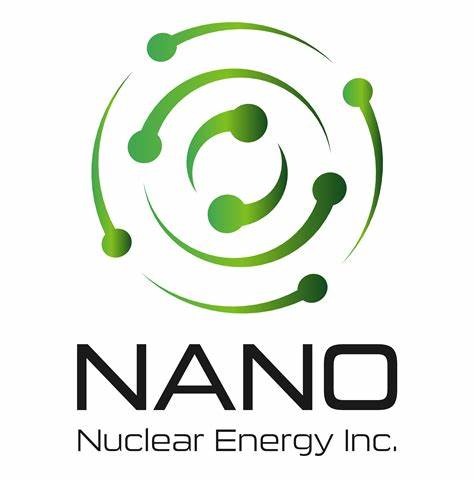
Nuclear Reactors 1318 – NANO Nuclear Energy Joins The U.K. Nuclear Institute – Part 1 of 2 Parts
-
Nuclear News Roundup December 06, 2023
Hyundai, KAERI team up for export of SMART SMR world-nuclear-news.org
Nuclear included in NZIA by European Council world-nuclear-news.org
Japan wants to cut carbon. But one of the world’s worst nuclear accidents is making it harder news.yahoo.com
New Brunswick leans heavily on nuclear in its 12-year clean energy plan theglobeandmail.com
-
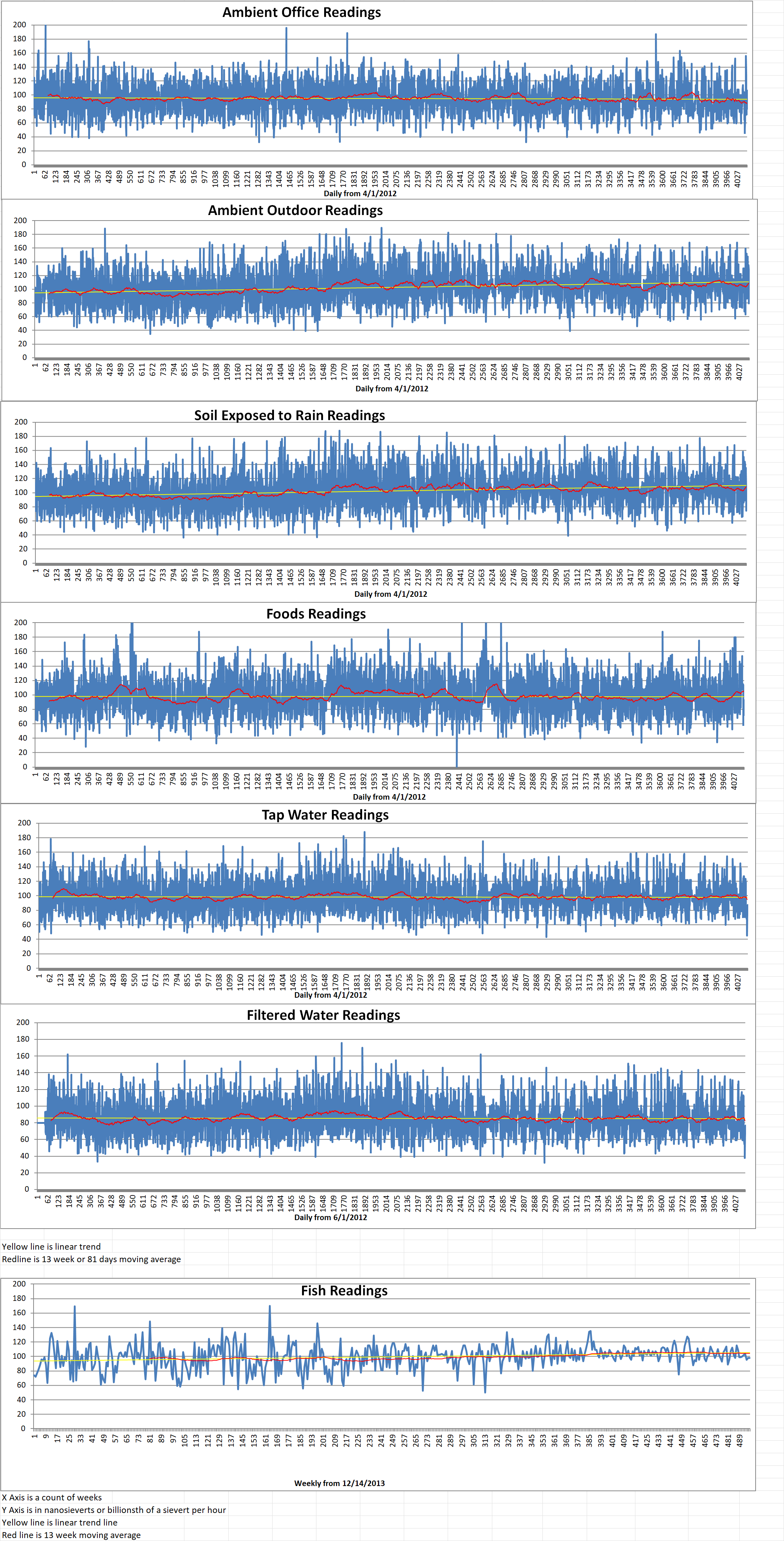
Geiger Readings for December 06, 2023
Ambient office = 106 nanosieverts per hour
Ambient outside = 95 nanosieverts per hour
Soil exposed to rain water = 95 nanosieverts per hour
Tomato from Central Market = 72 nanosieverts per hour
Tap water = 87 nanosieverts per hour
Filter water = 87 nanosieverts per hour
-
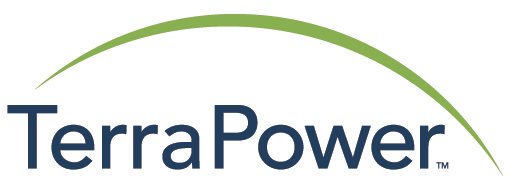
Nuclear Reactors 1317 – Top Five Small Modular Reactor Companies – Part 2 of 2 Parts
Part 2 of 2 Parts (Please read Part 1 first)
This is a continuation of a list of the top five companies currently working small modular reactors (SMRs).
TerraPower
Nuclear innovation company TerraPower was started in 2008 by Bill Gates and other private sector lenders. The company is now recognized as an international leader in the SMR space. It has secured eighty million dollars in federal funding from the U.S. Department of Energy (DoE) to support the design and development of its next-generation Natirum nuclear reactor. In 2021, TerraPower selected Kemmerer, Wyoming as its preferred site for the construction of its advanced nuclear reactor demonstration plant. The Natrium reactor is one of just two competitively selected advanced reactor demonstration projects (ARDP) by the DoE.
Westinghouse Electric Company
Westinghouse Electric Company moved to the forefront of the nuclear technology industry with its transportable eVinciTM micro reactor. The eVinci is more of a nuclear battery than a traditional nuclear reactor. The high-temperature heat pipe reactor can generate five megawatts of electricity and as much as thirteen megawatts of heat from its fifteen-megawatt solid thermal core. The mobile nuclear power plant draws its power from its advanced heat pipe technology and unique core design. The self-regulating heat pipes allow passive heat transfer. This permits autonomous operation and inherent load following. The reactor core is designed to operate for eight or more years in full power mode prior to refueling.
The eVinci micro reactor can be factory built, fueled, and assembled. A plug-and-play interface allows for the eVinci to be installed onsite in less than thirty days. eVinci can operate on or off the electrical grid in all weather conditions and temperatures. The deployable electricity and heat generator is ideal for industrial applications and district heating.
BWXT Advanced Technologies
SMR developer BWXT Technologies will construct the first advanced microreactor in the U.S. The nuclear solutions company was selected by the U.S. Department of Defense’s (DoD) Strategic Capabilities Office to manufacture full-scale mobile reactor prototypes. These prototypes are to be delivered for testing to the Idaho National Laboratory in 2024. The microreactor will be constructed under a three hundred million dollar valued cost-type contract. This was reported by a company press release issued last summer.
Joe Miller is the President of BWXT Advanced Technologies LLC. He said, “We are on a mission to design, build and test new nuclear technology to protect the environment while providing power, and we are thrilled with this competitively bid award after years of hard work by our design and engineering team. The entire nuclear industry recognizes that advanced reactors are an important step forward to support growing power needs and significant carbon reduction imperatives.”
Kairos Power
SMR maker Kairos Power is counting on high-temperature molten salt reactors to provide competitive, reliable, and responsible nuclear energy. The company presents its fluoride salt-cooled high temperature reactor (KP-FHR) as an affordable and long-term alternative to conventional sources of energy such as natural gas. Natural gas is the U.S.’s primary fuel of choice. This information was provided by the U.S. Energy Information Administration.
The KP-FHR is a novel SMR technology with a near-zero carbon footprint and minimal water consumption. It features an accident-resistant design and dispatchable reactor. As U.S. natural gas use declines in the next decade, Kairo is poised to meet increasing electricity demand with its innovative high-purity fluoride salt-cooled technology. The company intends to complete an initial demonstration of its advanced nuclear reactor design by no later than 2030. This information was provided by Mike Laufer, who is the co-founder and CEO of Kairos.
SMRs offer governments across the globe the chance to reduce emissions and provide reliable power to consumers. Thanks to innovators like those listed above, SMRs are quickly getting ready to be deployed at a global scale. -
Nuclear News Roundup December 05, 2023
Putin views Russia’s new nuclear submarines, says more being rolled out aljazeera.com
Decommissioning of Grohnde set to begin world-nuclear-news.org
ENEC, NPPA to explore cooperation opportunities world-nuclear-news.org
-
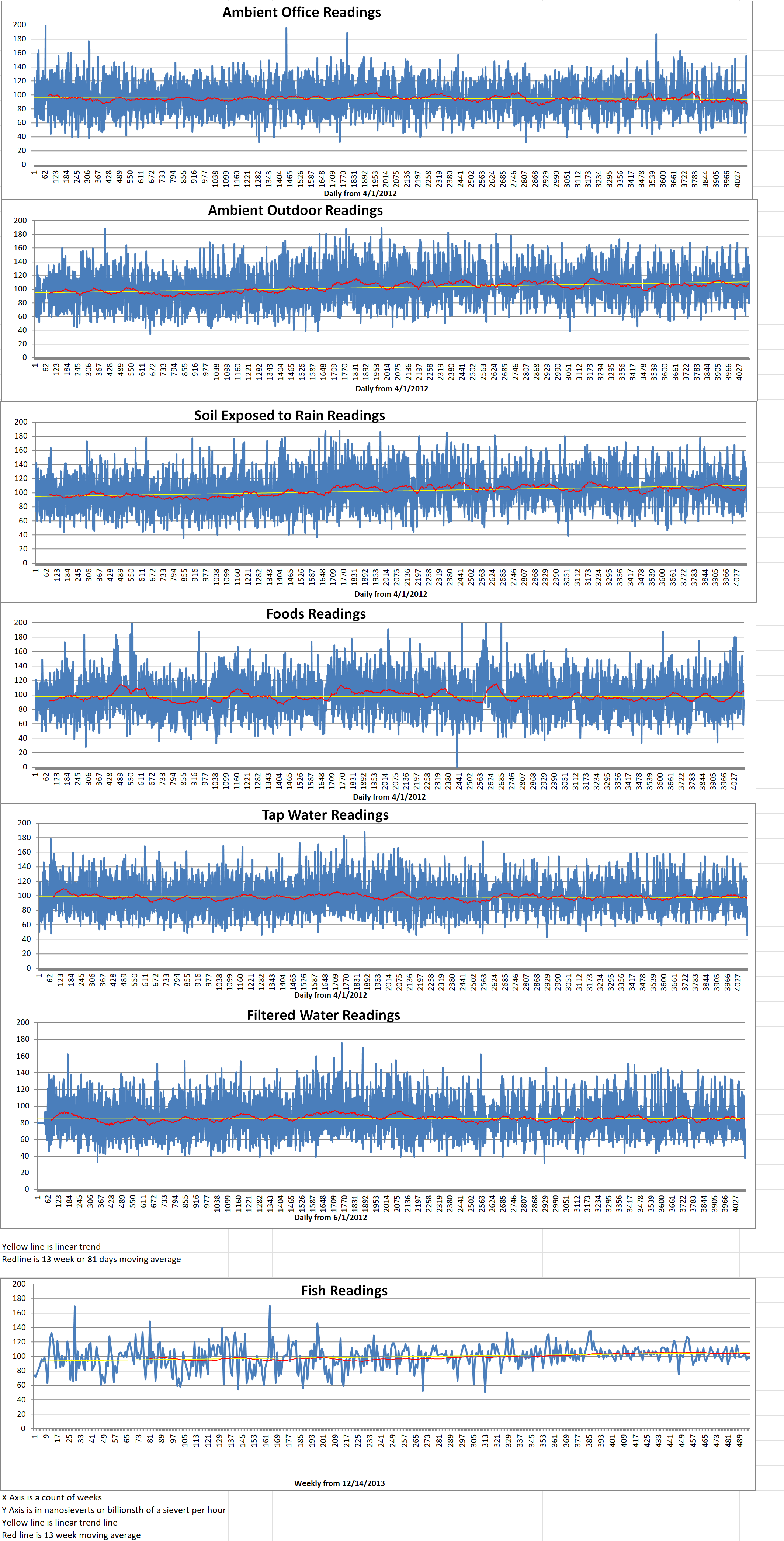
Geiger Readings for October December 05, 2023
Ambient office = 80 nanosieverts per hour
Ambient outside = 79 nanosieverts per hour
Soil exposed to rain water = 74 nanosieverts per hour
Red bell pepper from Central Market = 90 nanosieverts per hour
Tap water = 73 nanosieverts per hour
Filter water = 66 nanosieverts per hour
-

Nuclear Reactors 1316 – Top Five Small Modular Reactor Companies – Part 1 of 2 Parts
Part 1 of 2 Parts
Small modular reactors (SMRs) are disrupting conventional ideas about nuclear power. They are small, compact, and produce minimal emissions. This innovative alternative to conventional nuclear power reactors is receiving more public and private sector attention as governments across the globe work to meet global energy demands reliably and responsibly. According to a report released last year by Valuates, a market research firm, the global market for SMRs is expected to rise by sixteen percent year-over-year to hit nineteen billion by 2030.
SMR Pros
SMRs are advertised as being cheaper, smaller, and safer than conventional nuclear power reactors. They are to be manufactured in factories where economies of scale and improved quality control can be applied. They are modular in design and can be delivered to the operational site and installed quickly.
SMR Cons
SMRs can potentially produce more and hotter radioactivity in waste products.
Economic analysts question whether it will be cheaper to gang multiple SMRs together versus building a conventional gigawatt plus conventional nuclear power reactor. Some estimates suggest that it may cost more to create a multi-reactor SMR power plant that will produce as much electricity as a conventional reactor.
It may be possible to apply economies of scale to build SMRs in a factory. However, if quality control slips, then multiple sub-standard SMRs may be built and shipped to multiple sites before the problem is discovered forcing the decommissioning of multiple SMRs.
While the SMR market is filled with many innovative companies, here is a list of five leading SMR companies.
NuScale
This advanced nuclear reactor company went public in 2022. It is leading a number of large-scale projects across Central and Eastern Europe. NuScale is particularly active in Poland where it will construct its flagship VOYGR SMR power plant which will generate up to nine hundred and twenty-four megawatts of electricity as early as 2029. Although it is a newcomer to the nuclear technology market, Poland chose the Portland, Oregon-based NuScale to develop and build Poland’s first SMR. The historic agreement follows an ambitious multi-nation decarbonization plan signed in Glasgow, Scotland, last November by twenty-eight new members of the Powering Past Coal Alliance (PPCA). The eastern European nation generated about seventy percent of its electricity by burning coal in 2020, according to a report issued by Forum Energii in 2021.
A NuScale project in the U.S. had to be cancelled because the cost of the project rose from three billion to nine billion dollars in just four years. In addition, NuScale was accused of misrepresenting information about the project to investors. It announced a big project with Standard Power to construct a NuScale power plant with multiple NuScale reactors to provide power for two data centers. Iceberg Research reported that an analysis of power needs for the Standard Power data center indicated that the proposed NuScale plant would produce far more electricity than the project required. Iceberg Research also reported that Standard Power did not have sufficient funding to pay for the proposed NuScale power plant.
Please read Part 2 next -
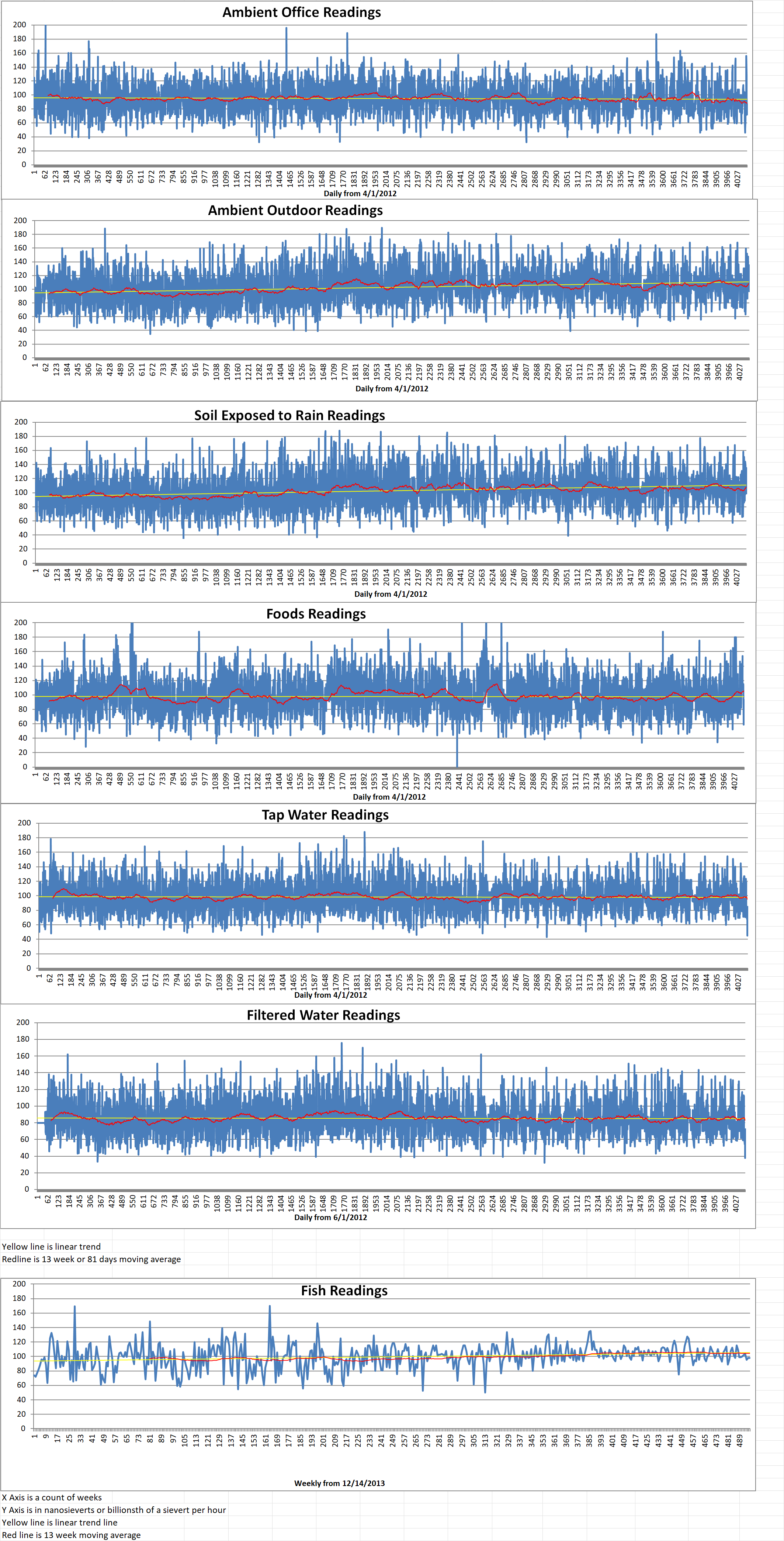
Geiger Readings for December 04, 2023
Ambient office = 80 nanosieverts per hour
Ambient outside = 97 nanosieverts per hour
Soil exposed to rain water = 99 nanosieverts per hour
Peach from Central Market = 93 nanosieverts per hour
Tap water = 85 nanosieverts per hour
Filter water = 72 nanosieverts per hour
-
Nuclear News Roundup December 04, 2023
Türkiye issues permission to commission 1st power unit of Russian-built nuclear power plant English.news.cn
Illinois will soon allow construction of new nuclear power projects advantagenews.com
Putin visits a shipyard to oversee the commissioning of new Russian nuclear submarines apnews.com
Nuclear warnings serve Putin’s purpose as he bids for new term reuters.com
-
Nuclear News Roundup December 03, 2023
Japan wants to cut carbon. But one of the world’s worst nuclear accidents is making it harder techxplore.com
Cosmic nuclear fission seen for 1st time in ‘incredibly profound’ discovery space.com
Inside the Little-Known U.S. Arms Control Center in Daily Contact With Russia time.com
‘Nuclear is here’: Why a nuclear renaissance is happening in Knoxville and Oak Ridge knoxnews.com
